March 6, 2010 - National Air & Space Museum,
Udvar-Hazy Center |
|
My local EAA Chapter went to visit the National Air & Space Museum
Udvar-Hazy Center, about an hours drive away. I've only been
once about six years ago. The sun was out but it was cold and
windy.
I would characterize the two National Air & Space Museums --
the Mall and Udvar-Hazy -- as the world's finest collection of aircraft of
historical significance. They have the first aircraft to achieve
powered flight, the first aircraft to fly non-stop across the Atlantic,
the first 707, a 7-time Reno unlimited air race winner: that sort of
thing.
Here chapter members are racing for the museum! |
|
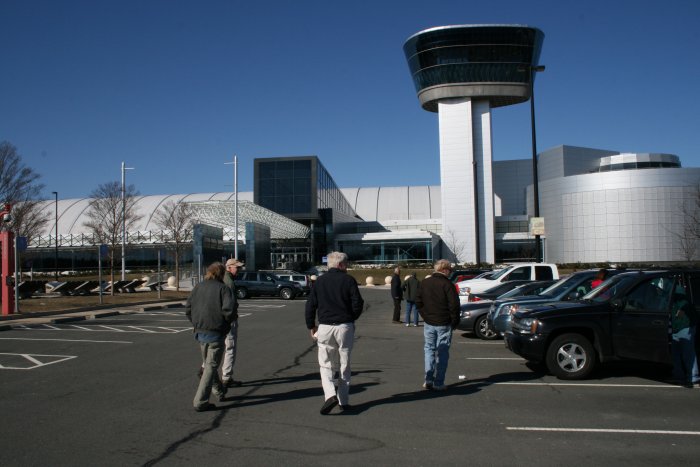 |
|
|
This Corsair is one of the first planes you see when you
walk in.
Before we started touring airplanes we saw the IMAX
movie "Fighter Pilot" which was awesome. It's about the Red
Flag exercise the US Air Force holds annually out in Nevada.
|
|
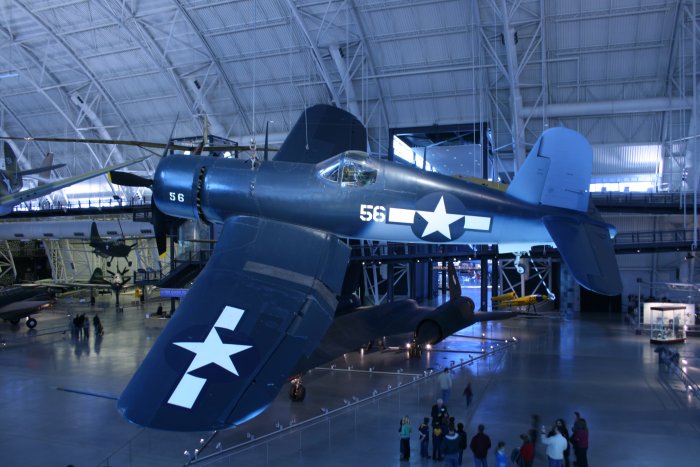 |
|
|
This plain-looking airplane Little
Bee Gee is of particular historic significant to me:
it's the plane that made it legal for someone like me to build and
fly their own airplane.
"With financial support from Lee Eyerly of Salem, Oregon, Tom Story of
Portland had designed and built an aircraft in 1938 patterned on Leslie
Long's Low Wing Longster. Story's airplane took the nickname Wimpy but
when George Bogardus acquired it after the war, he renamed it Little Gee
Bee.
George Bogardus flew the Little Gee Bee from Oregon to Washington, D.
C., in 1947, 1949, and 1951. These three flights helped to convince
officials in the Civil Aeronautics Administration and the Civil
Aeronautics Board that amateurs could design and build light aircraft that
were safe, reliable, and capable of practical cross-country flights. The
CAA enacted legislation in 1952 that for the first time sanctioned the
registration and operation of amateur-built aircraft. Later that year,
Paul Poberezny founded the first chapter of the Experimental Aircraft
Association.
The Experimental Aircraft Association, Inc., Portland Chapter 105,
began restoring the airplane about January 2005. In November 2006, they
delivered the restored aircraft to the Smithsonian National Air and Space
Museum."
|
|
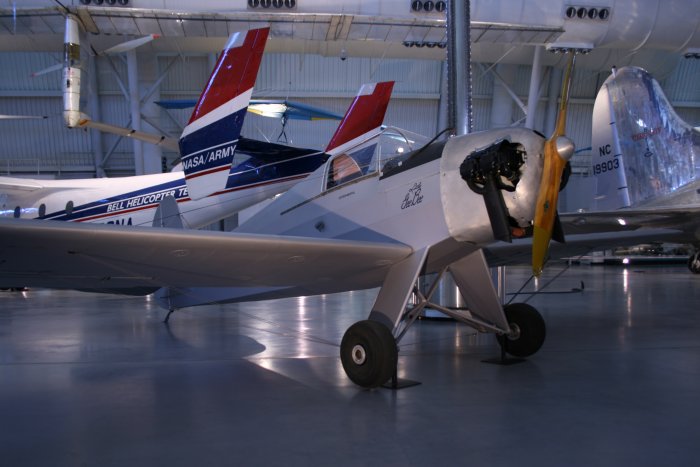 |
|
Before the Wright Brothers, there was the Langley
Aerodrome A Despite government funding, it did not achieve
flight. It looks like to me that Langley just doodled something
together on a napkin and said "Gee, I think this would fly".
Contrast that to the Wright Brothers who with their own
funds used the scientific method to figure out what was required and
what would work. |
|
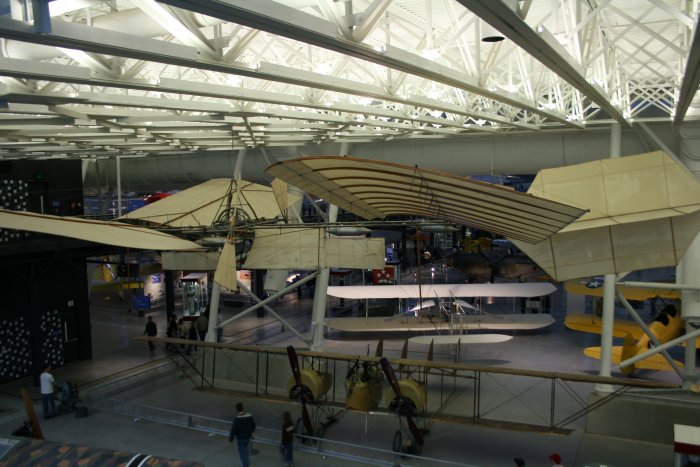 |
|
| Wright Model B, the first "factory"
built plane. |
|
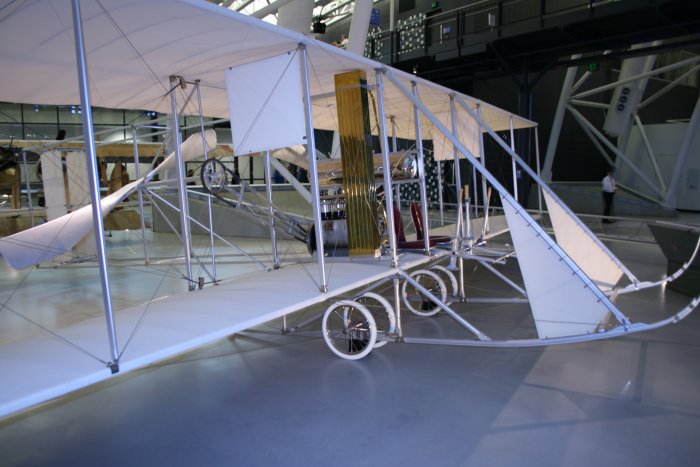 |
|
| Aeronca C2 - forerunner of the
Champs and Citabrias. It first flew in 1929 and only cost
$1,300. It had a 26 horsepower engine -- less than what my old
Ultralight had -- and a top speed of 80mph. |
|
 |
|
| Of course, there has to be a Piper J-3
Cub in the collection. Below it is another one of hte great planes
of all times: the Boeing 707. In fact, it is the first 707 ever
made. |
|
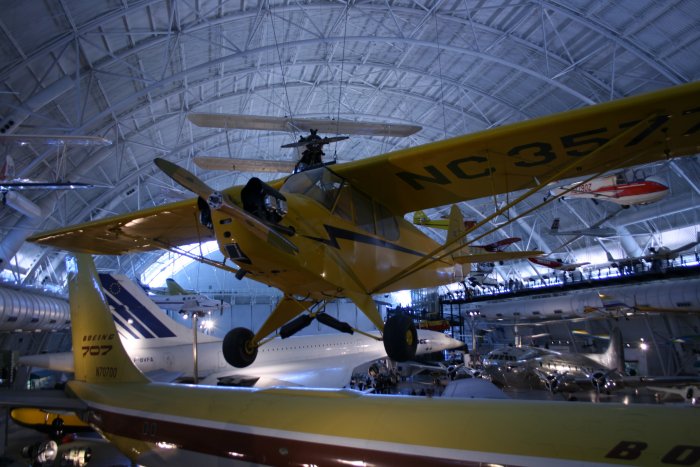 |
|
|
A beautifully restored Fairchild PT-19 trainer.
These were primary trainers during World War II. I saw
a PT-23 -- radial-engine version of the PT-19 -- at
the Massey Airfield fly-in back in December. |
|
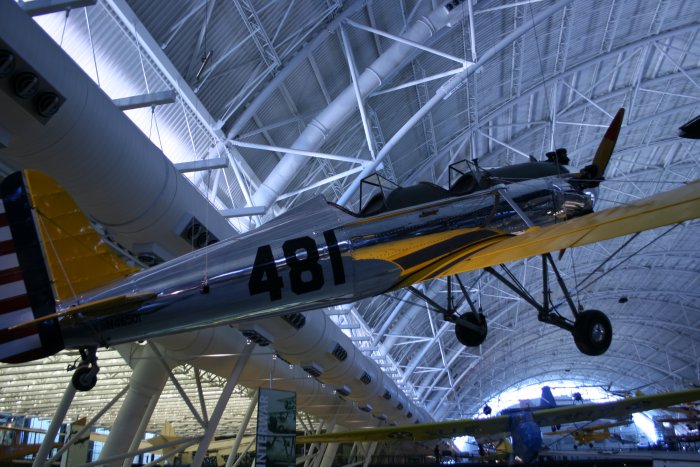 |
|
|
This Navy N2S, or Stearman on floats as I like to call it,
hung from the ceiling in Dahlgren Hall at the U.S. Naval Academy for many
years before coming to Udvar-Hazy. |
|
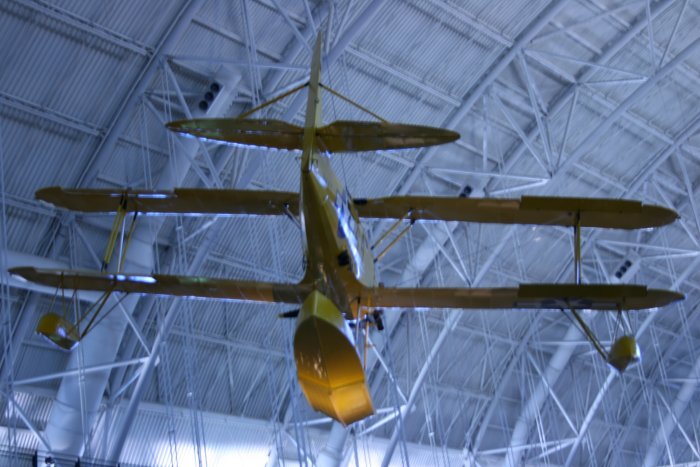 |
|
| A beautiful Curtiss F92 Sparrowhawk,
which operated from the U.S. Navy's giant dirigible airships Akron
and Macon from 1932 to 1935. Notice the hook on top of the top
wing that would catch retractable trapezes from the airship. Both of
the airships crashed and that was it for the Sparrowhawks. |
|
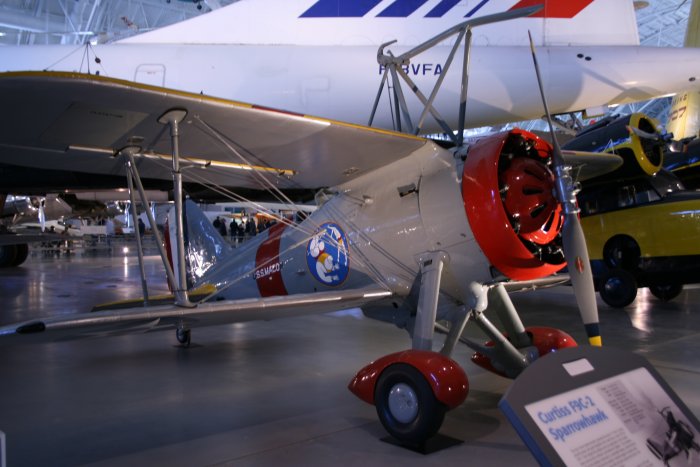 |
|
| Business end of the P-40 Warhawk. |
|
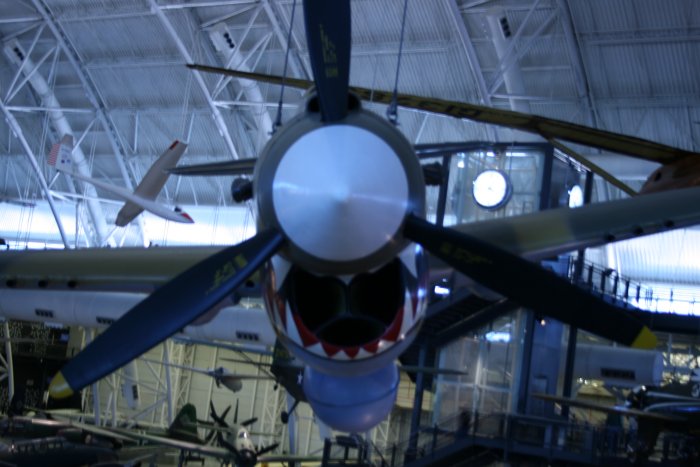 |
|
|
An immaculate Hawker Hurricane, of Battle of Britain
fame. I remember seeing this airplane under restoration on a tour of
the Paul Gerber center about ten years or so ago. It hadn't been
covered in fabric yet and the fuselage consisted of wood bulkheads and
longerons. |
|
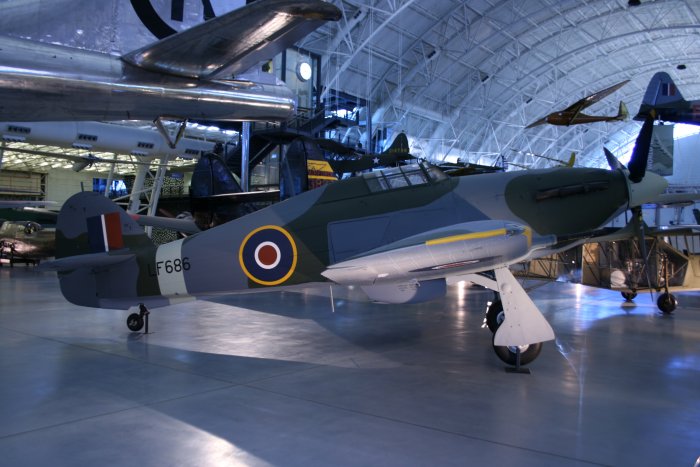 |
|
| The German JU-52 or "Auntie Ju".
This was their DC-3 equivalent. |
|
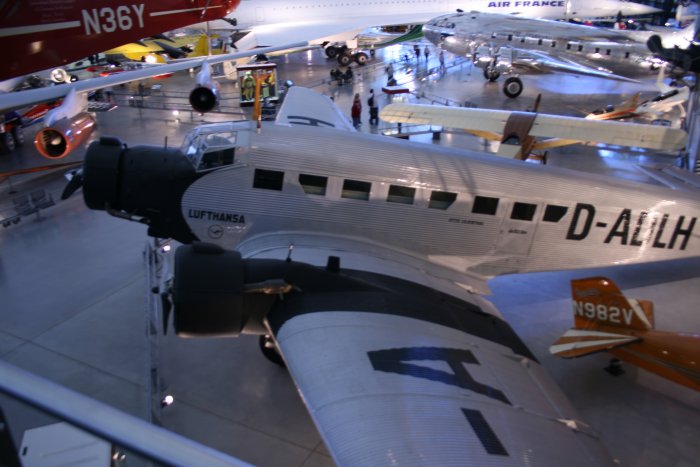 |
|
| A Vought OSU2 Kingfisher
floatplane. These planes were carried aboard U.S. Navy
battleships and cruisers and did all sorts of things, including rescuing
downed airman. |
|
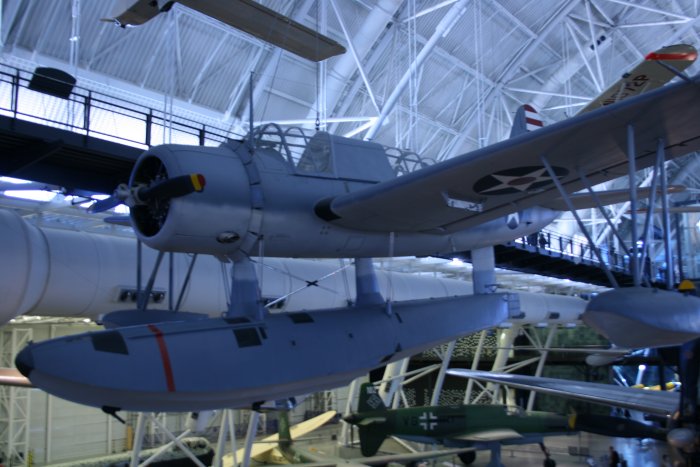 |
|
| The mighty F6F Hellcat. |
|
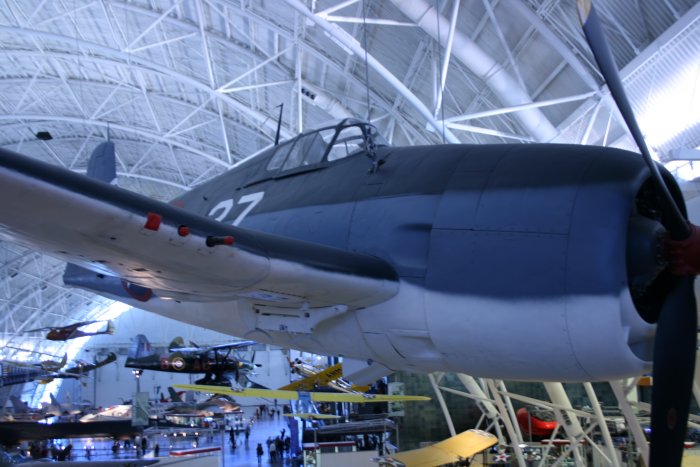 |
|
| This P-38J Lightning looks like it
just came from Henderson Field on Guadalcanal in early 1943. |
|
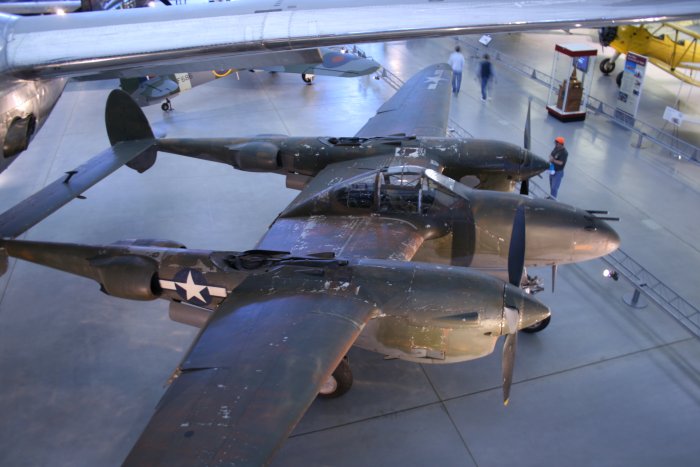 |
|
|
The German Focke-Wulf 190. |
|
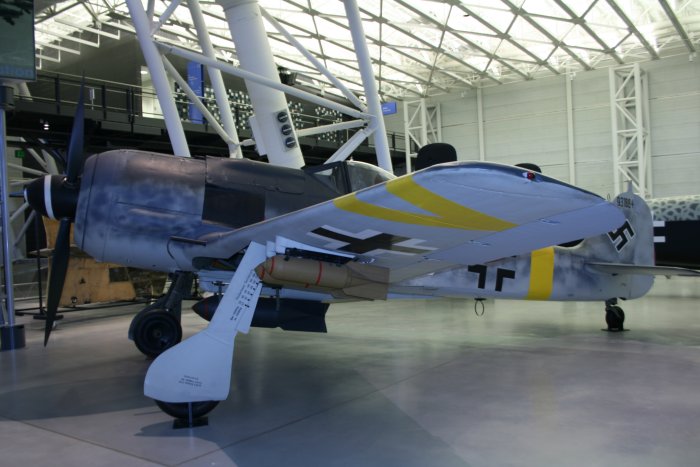 |
|
|
This is the only example of the German Heinkel HE-219 Uhu which was a
night fighter.
"The He-219 has been described as the best night fighter operated in
World War II by the German Air Force, the Luftwaffe. It may have been the
best night fighter of the war. Only the American Northrop P-61 "Black
Widow" shares the He-219's unique status of being designed for night
operation. The He-219 was fast, maneuverable, and carried devastating
firepower. It was the only piston-engined Luftwaffe night fighter which
could meet the fleet British De Havilland "Mosquito" on equal terms.
Advanced features included remote-controlled gun turrets, a pressurized
cabin, the first steerable nosewheel on an operational German aircraft,
and the world's first ejection seats on an operational aircraft."
Despite its effectiveness, only 294 were constructed and 268
eventually put in service.
For a great book on night-fighting in World War II, read Max
Hastings' Bomber Command.
|
|
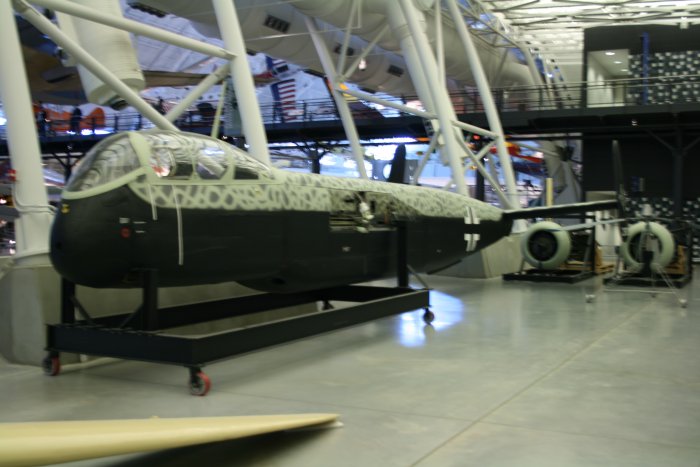 |
|
|
The B-29 Bomber "Enola Gay" which dropped the atomic bomb
on Hiroshima. |
|
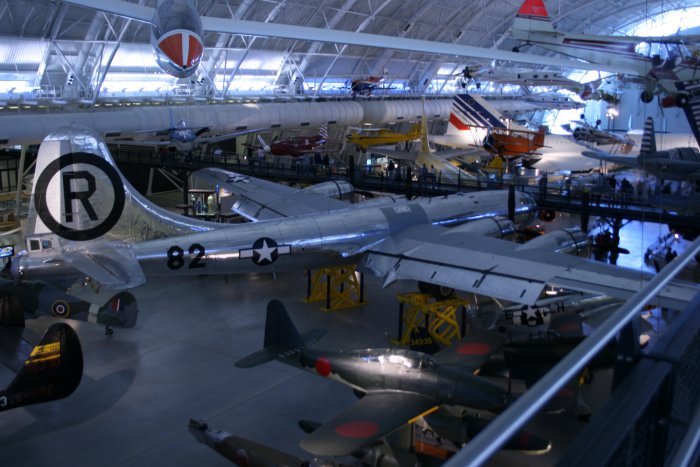 |
|
|
The unusual Dornier Do-335 Pfeil (Arrow). This was one of the
German wonder weapons which was "too little, too late".
"The Do-335 was one of a small group of aircraft marking the pinnacle
of international piston-engined development. It was the fastest production
piston-engined fighter ever built, attaining 474 mph in level flight at a
time when the official world speed record was 469 mph. Powered by two
1800-hp engines in a unique low-drag configuration and weighing 21,000 lb
loaded, it was an exceptional heavy fighter. "
Few were built, however, and no Do-335s actually entered combat.
|
|
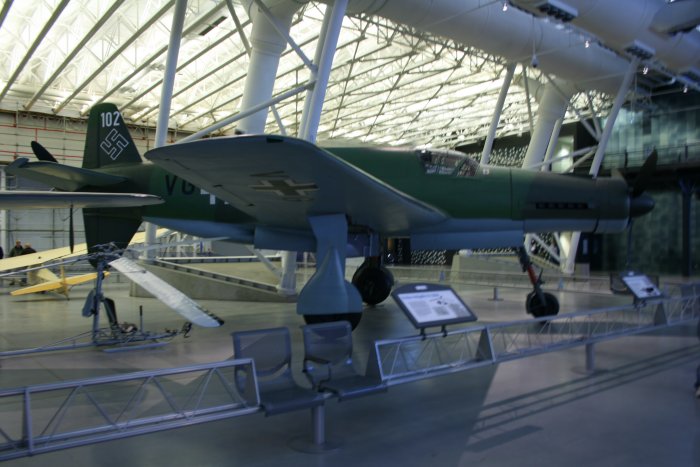 |
|
| A "Swift" which are famous for
being unpainted bare-metal and highly polished. |
|
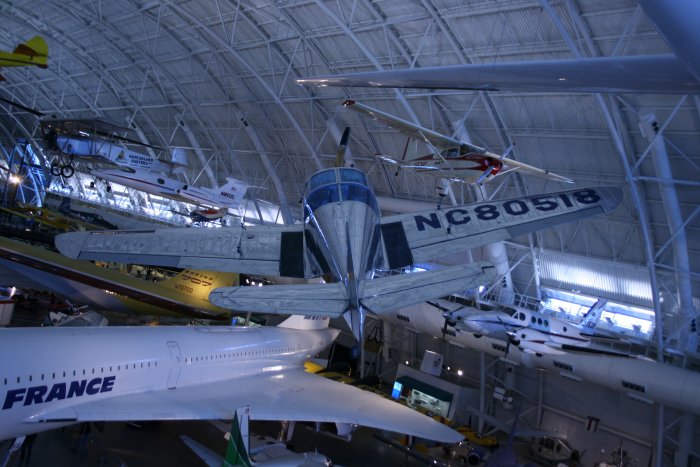 |
|
| |
| This Grob 102 glider set the soaring
altitude record. The pilot made it to an amazing 49,000 feet.
|
|
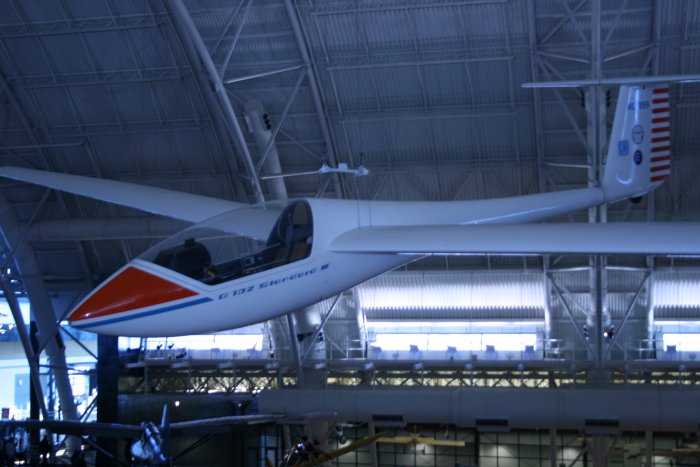 |
|
|
Darrell Greenemeyer won six "Unlimited" championships at
the Reno Air Races in this highly modifed Grumman F8F-2 Bearcat:
Conquest I. The canopy on this airplane is miniscule.
"Grumman designed the Bearcat late in World War II as a
replacement for the F6F Hellcat Navy fighter. It was noted for its
exceptional climbing ability and maneuverability. Conquest 1 featured a
shorter wingspan than the production Bearcat, a special small bubble
canopy, a larger propeller taken from a Douglas A-1 Skyraider, and a
propeller spinner from a North American P-51D Mustang. Special high-octane
gasoline, fuel additives, and putty-sealed gaps to reduce drag greatly
increased its speed."
If you want to read a great book about the Reno Air Races,
read " Fly Low, Fly Fast" by Robert
Gandt. |
|
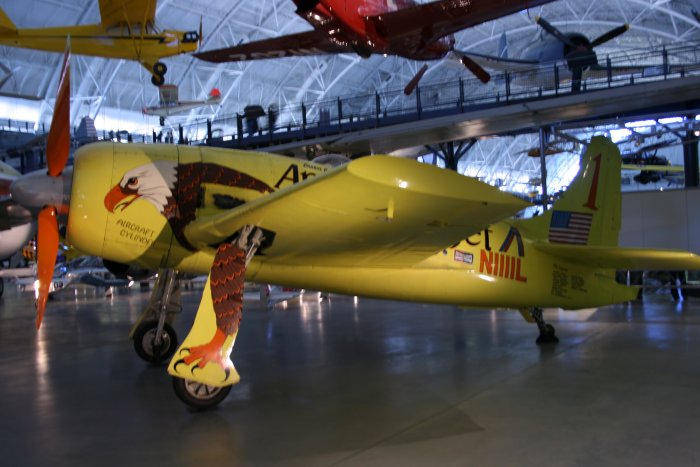 |
|
|
Why is a Cessna 150 in the NASM and why would I take a picture of
one? First of all, this is the plane I learned to fly in, back in
1976 at Naval Air Station Moffett Field. Secondly, the Cessna
150/152 is truly one of the "great planes". And finally, this
particular plane is a Cessna 152 Aerobat and was flown by the famed
instructor William Kershner.
"The Cessna 150 and 152 became the most popular civilian training
aircraft after World War II, as well as economical recreational vehicles
for weekend pilots. The series still serves as the principal two-seat,
general aviation trainer in the United States. The A152 Aerobat, with
greater structural strength to withstand up to +6g and -3g forces, appeals
to those looking for a little more basic aerobatic and spin
capability.
William K. Kershner bought this A152 in 1984 for his
ACE Aerobatic School in Sewanee, Tennessee. A pilot for 61 years, Kershner
flew more than 11,000 hours in military and civilian aircraft and
performed over 7,000 spins for instruction and research purposes. He wrote
five flying manuals, laced with technical wisdom and his trademark wit,
that thousands of pilots worldwide have relied upon. In this airplane, 435
students completed his spin training course." |
|
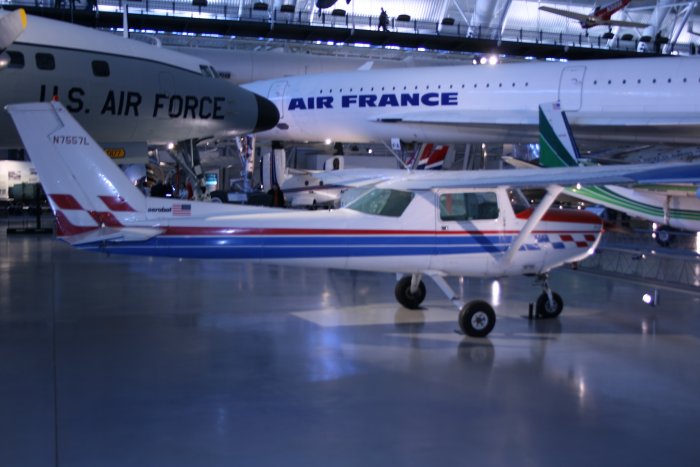 |
|
A Monnett Moni. This motorglider was designed
by schoolteacher and EAA giant John Monnett during the early
1980s. I include it here because this John Monnett was the
founder of Sonex
Aircraft company, which produces the Xenos motorglider kit.
I am helping my brother-in-law build some Xenos wings. This
plane is obviously the early version of the Xenos.
"John Monnett, a multi-thousand hour private pilot with
both glider and float plane ratings and an A&P Mechanic, has many
designs to his credit including the Sonerai sport aircraft series,
Monerai sailplane, Moni motorglider, Monex racer, along with numerous
other homebuilt aircraft. He combines thirty-five years of homebuilt
aircraft and restoration experience with his twenty-five years of kit
aircraft sales and support in his latest business venture. John was
inducted into the EAA Homebuilder's Hall of Fame in 2001 and his designs
are on display in the Udvar-Hazy National Air & Space Museum and the
EAA AirVenture Museum." |
|
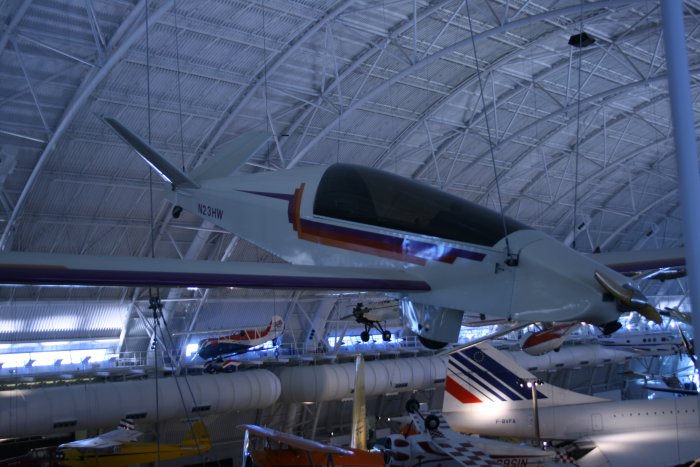 |
|
| Here you are looking at the inside of a
radial engine. The pistons move so you can really see how it
works. |
|
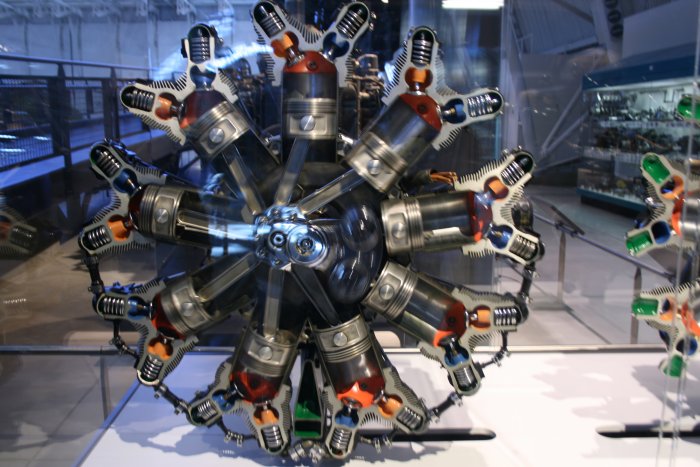 |
|
| Same display. The engine halves
actually come together! This is probably the best "how an engine
works" display I've ever seen. |
|
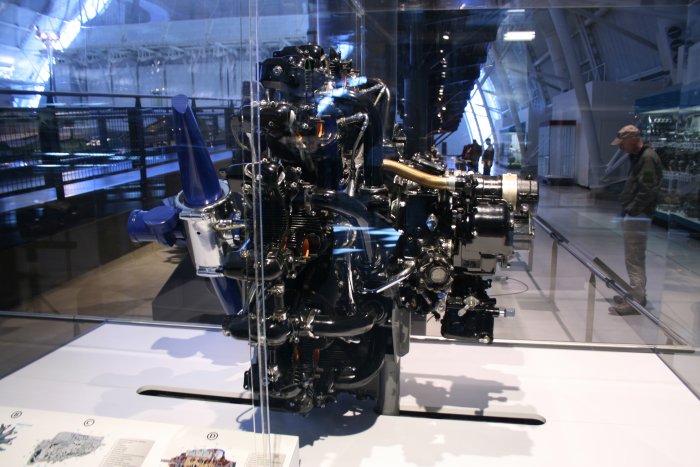 |
|
| Another big engine display, this time
of a Allison T-56 engine. Why do I care? The T-56 is the
turbo-prop engine that powers all the C-130, P-3s, C-2s and E-2s.
Both my Dad and I served in P-3s so we are both glad it was, and is, a
very reliable engine. It was neat for me to see the inner
workings. |
|
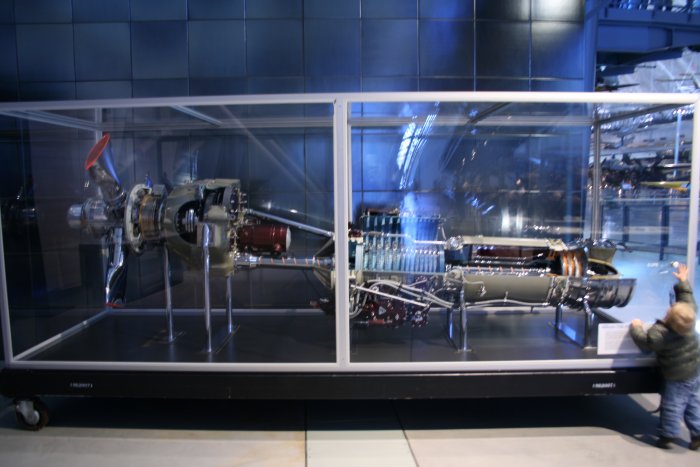 |
|
|
Another "great plane" in the history of homebuilt
airplanes: the Rutan VariEze. Designed by the great Burt
Rutan, this plane was the original "glass" airplane.
|
|
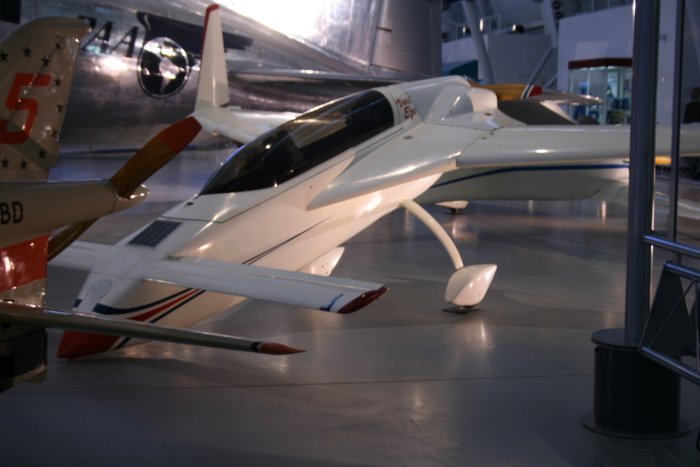 |
|
| The Weedhopper ultralight.
Ultralights were the hot thing in the early 1980s. I wanted one
bad! |
|
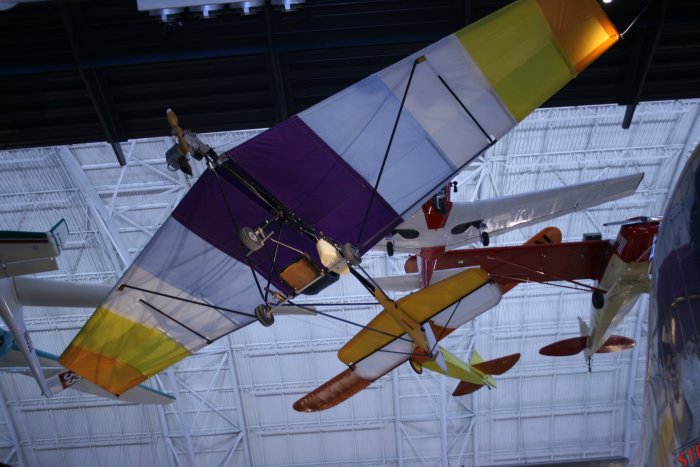 |
|
|
This is a Standard (SM-3) missile which is a surface to
air missile used on U.S. Navy ships. A USN Aegis cruiser will carry
about a hundred or so of these guys and no airplane can fly within a 100
mile radius unless the Aegis cruiser allows it. The Navy also has a
version of this missile which can intercept incoming ballistic
missiles. |
|
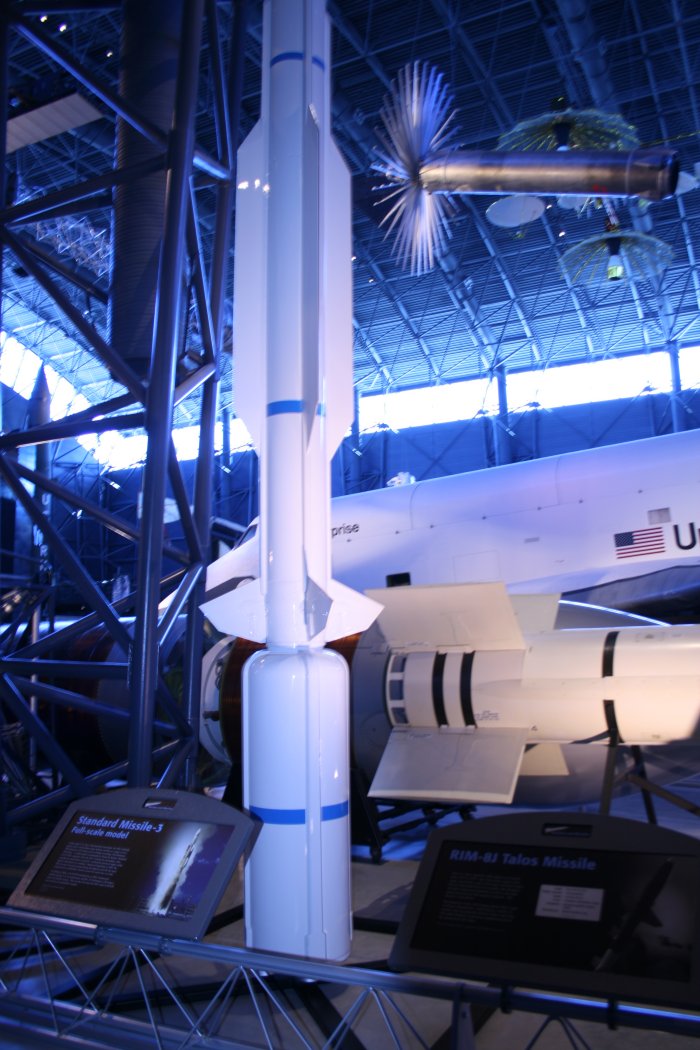 |
|
| Underneath the wing of the first
707. When flying on commercial jets like the 737, 757 & Airbus,
I wondered what the big pylons under the wings were for. Now I
know. They are fairings for the huge aileron control mechanisms you
see here. I guess it takes a lot of force to move the ailerons
up and down when the jet is flying 550 mph or so. |
|
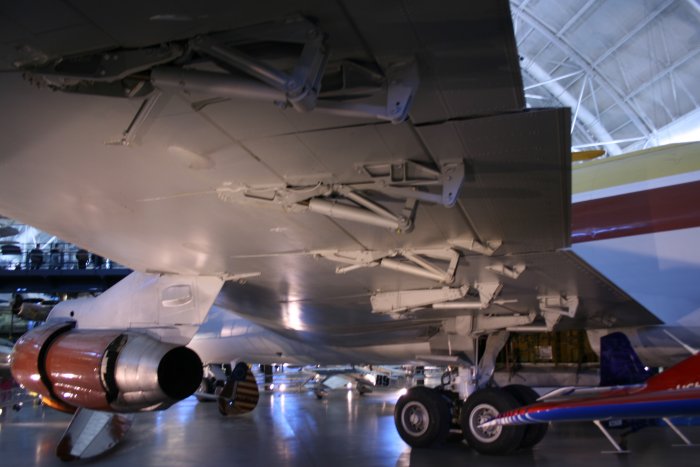 |
|
| The Space Shuttle "Enterprise".
This was a prototype that never actually flew. I think the NASM is
going to get one of the three shuttles that have flown, since they are
being retired this year, as the U.S. gives up on its manned space
program. :( |
|
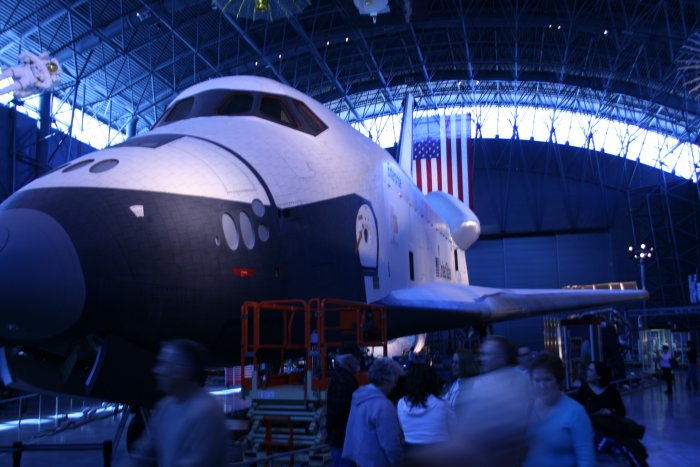 |
|
| Sleek front-end of the Concorde. |
|
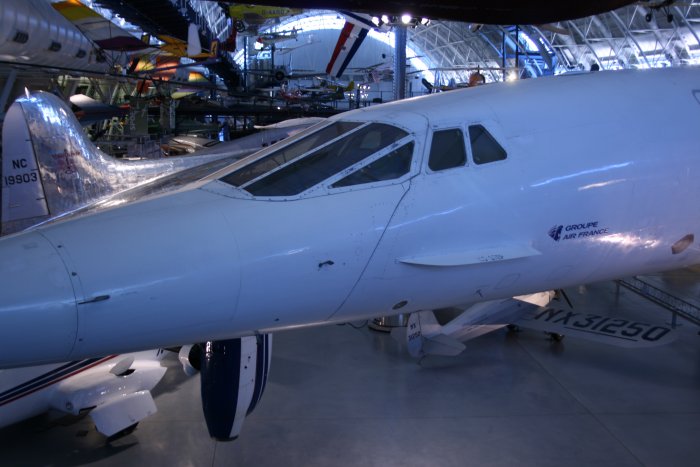 |
|
|
A big jet flew by as we left the Museum.
|
|
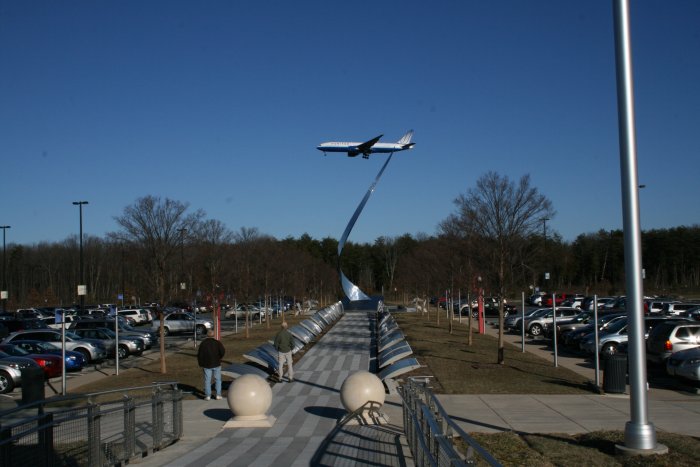 |
|
|
|
|
|
|
|
|


































